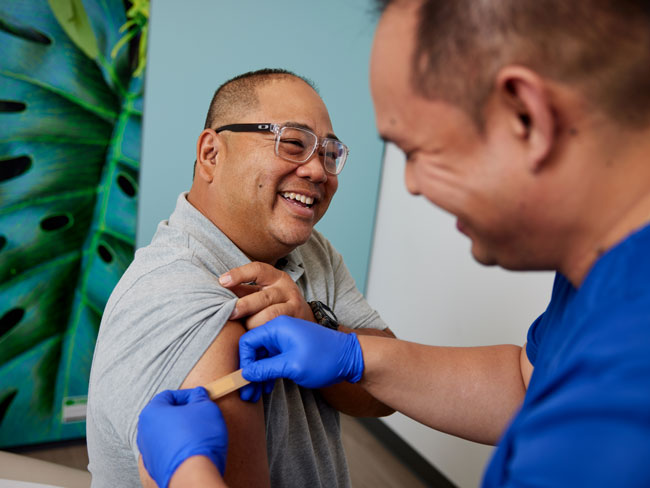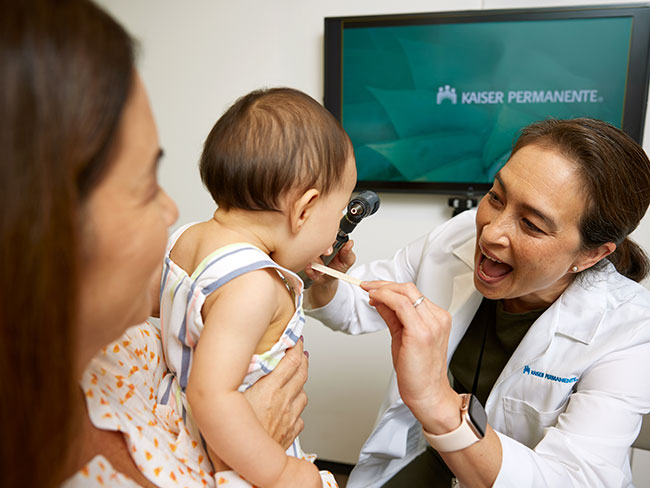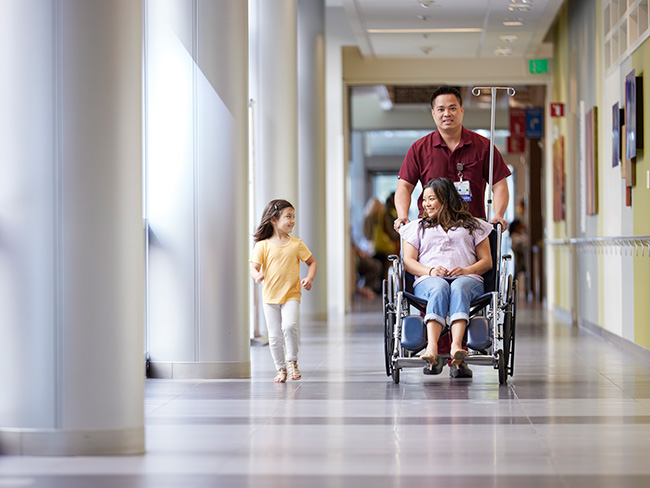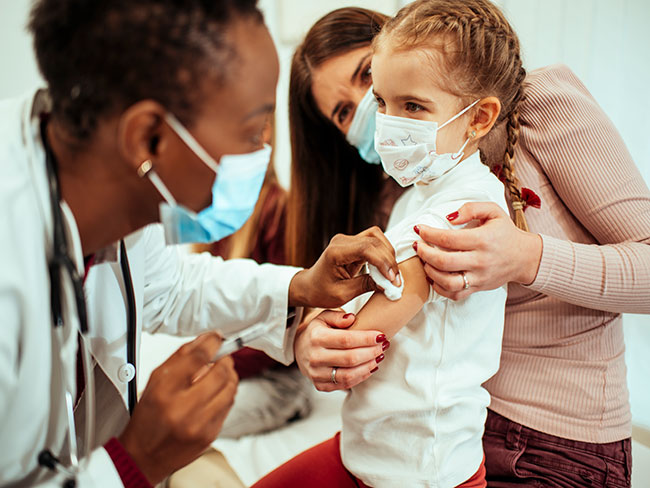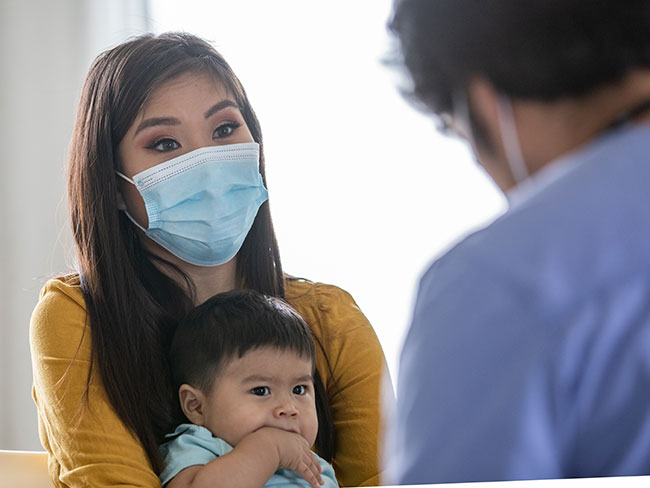Kaiser Foundation Health Plan and Hospitals Q2 2020 financial update
Kaiser Permanente’s integrated health care system continues to provide high-quality care to members and communities throughout the COVID-19 pandemic.
Kaiser Permanente’s mission is to provide high-quality, affordable health care services and to improve the health of our members and the communities we serve. As a nonprofit health care system, Kaiser Foundation Health Plan, Inc., Kaiser Foundation Hospitals, and their respective subsidiaries (“KFHP/H”) devote resources to advancing this mission through investments in high-quality integrated care delivery and coverage to make health care more affordable.
Financial results
For the 6 months ending June 30, 2020, total operating revenues was $44.7 billion, compared to $42.8 billion for the same period in 2019. Operating income for the first half of the year was $3.3 billion, compared to $2.7 billion for the same period in 2019. Total other income and expense was $66 million in the first half of the year, compared to $2.6 billion for the same period last year. Year-to-date net income was $3.4 billion, compared to $5.2 billion for the same period in 2019.
For the quarter ending June 30, 2020, KFHP/H reported total operating revenues of $22.1 billion and total operating expenses of $20.0 billion, compared to total operating revenues of $21.4 billion and total operating expenses of $20.3 billion for the same period of the prior year. Operating income was $2.1 billion or 9.4% of total operating revenues in the second quarter of this year, compared to $1.1 billion or 5.2% in the second quarter of 2019.
After a challenging first quarter driven by investment losses, total other income and expense rebounded to $2.5 billion in the second quarter of this year, compared to $930 million in the same period of the prior year. As a result of these market fluctuations, net income was $4.5 billion for the quarter ending June 30, 2020.
“Deferred elective surgeries and procedures due to stay-at-home orders across the communities we serve contributed heavily to our second quarter results by temporarily reducing our operating expenses,” said executive vice president and chief financial officer Kathy Lancaster. “As we continue to face uncertain times due to the COVID-19 pandemic, economic volatility, and societal unrest, Kaiser Permanente remains committed to our mission of providing quality care for more than 12 million members and improving health in our communities. Leveraging virtual care, establishing stringent safety protocols for in-person appointments, providing appropriate personal protective equipment for front-line staff and clinicians, and maintaining expanded capacity to care for COVID-19 patients enabled us to deliver on our mission during these truly unprecedented times.”
Membership and Medical Financial Assistance
Kaiser Permanente’s membership totaled 12.4 million as of June 30, 2020, which reflects growth of nearly 183,000 members since December 31, 2019.
COVID-19 continues to impact the economy, and unemployment remains high, averaging from 9% to 20% for the quarter in the markets we serve. As a result, we have begun to see a loss in commercial membership as members transition to Medicaid or lose coverage altogether. As members lose their employer-provided plans, Kaiser Permanente wants to ensure they have access to coverage through individual and Medicaid plans. As of June 30, 2020, Kaiser Permanente was providing care for over 900,000 Medicaid members. Due to the unpredictable nature of this pandemic, we expect these shifts in membership mix to continue through 2021.
As the virus continues to spread and the economic effects remain, low-income, uninsured, and underinsured populations have been especially hard hit. Kaiser Permanente’s Medical Financial Assistance program helps ease the financial burden during these difficult times. In addition, Kaiser Permanente’s community health programs are addressing pressing social needs, including food, housing, and safety, for people in our local communities.
Capital spending
Capital spending of $907 million in the second quarter reflects ongoing investments in technology and infrastructure, including expanded care delivery to address COVID-19 needs. Kaiser Permanente has 715 medical offices nationwide, along with 39 hospitals and 52 retail and workplace clinics. As part of Kaiser Permanente’s pandemic preparations, we reconfigured our hospitals and built new clinical capacity to allow for doubling the ability to provide inpatient care, if needed.
Kaiser Permanente COVID-19 response
The COVID-19 pandemic and efforts to control it have had enormous impact on public health care globally. As a major provider of both medical care and coverage, Kaiser Permanente has worked closely with public officials, customers, and a wide range of organizations to respond to and mitigate the pandemic.
“As we enter the sixth month of the pandemic, we know our members and communities have many concerns. Access to quality health care should not be one of them. We have now reintroduced care that was halted during the stay-at-home orders, expanded our services, especially virtual care, and are working with members to schedule care that may have been deferred,” said chairman and CEO Greg Adams. “Moreover, we are working to expand our testing capabilities by purchasing our own testing equipment and building Kaiser Permanente testing labs, partnering with state and local health departments to support robust contact tracing, helping to slow the spread of the virus through education and household prevention kits, and helping our customers maintain their health coverage through these difficult times.”
Kaiser Permanente prepared for periodic surges by establishing mobile hospitals, doubling hospital bed capacity, expanding consumer digital offerings, acquiring additional equipment, and building new testing capacity, including a new testing facility. We have made significant investments in people, facilities, equipment, supplies, and virtual technologies to support patient care and the safety of members, employees, physicians, and the public. Kaiser Permanente has expanded and adjusted hospital, clinic, and virtual care operations to safely care for more than 120,000 COVID-19 patients, and as of July 31, we had administered more than 1 million COVID-19 diagnostic tests, while also meeting the immediate and ongoing health needs for all members.
Leveraging virtual care
The pandemic has driven extraordinary consumer adoption of Kaiser Permanente’s wide array of convenient telehealth services. In the first half of 2020 alone, nearly three-quarters of members took advantage of the secure personalized features of their kp.org consumer portal and digital app to send secure messages to clinicians, view laboratory results, and fill prescriptions online — prescriptions that can then be delivered to members’ homes, enhancing convenience and safety. The growing popularity and convenience of telehealth visits — including phone, video, and secure messaging platforms — enabled members to safely connect with physicians and other clinical professionals during the pandemic, with telehealth visits now surpassing the 15 million mark.
Financial summary
| ($ in millions, except %) | YTD 2020 | Same Period 2019 |
| Total operating revenues | $44,690 | $42,781 |
| Total operating expenses | $41,363 | $40,129 |
| Operating income | $3,327 | $2,652 |
| Operating margin | 7.4% | 6.2% |
| Total other income and expense | $66 | $2,551 |
| Net income | $3,393 | $5,203 |
| Capital spending | $1,819 | $1,544 |
Note: Certain statements included in this document may constitute “forward-looking statements.” Such statements are generally identifiable by the terminology used, such as “plan,” “project,” “forecast,” “expect,” “estimate,” “budget,” or other similar words. The achievement of certain results or other expectations contained in such forward-looking statements involve known and unknown risks, uncertainties, and other factors, which may cause actual results, performance, or achievements described to be materially different from any future results, performance, or achievements expressed or implied by such forward-looking statements. Accordingly, actual results will vary, and the variations may be material. None of the KFHP/H organizations plan to issue any updates or revisions to those forward-looking statements if or when expectations change, or events, conditions, or circumstances on which such statements are based occur.
